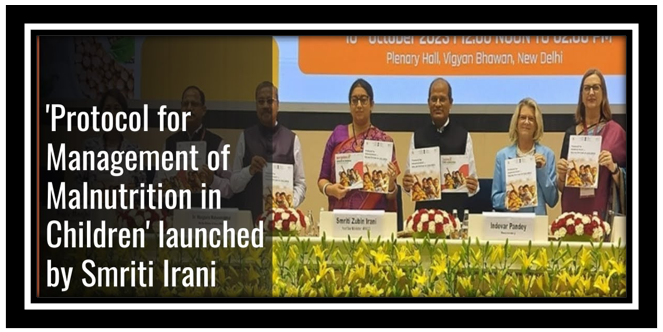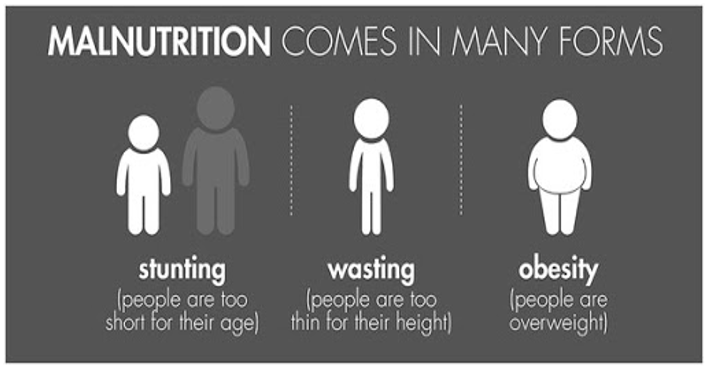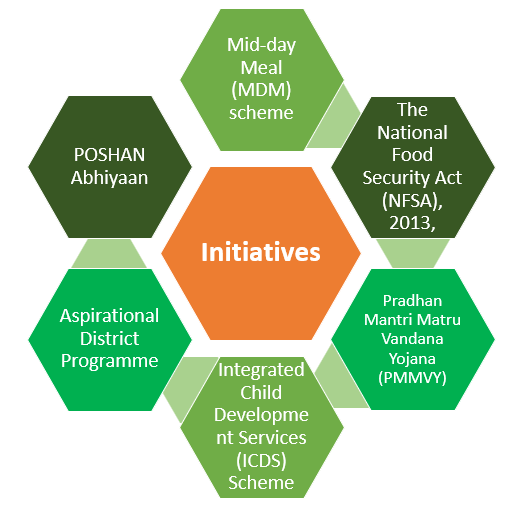- Courses
- ABOUT US
- OUR TOPPERS
- TEST SERIES
- FREE STUDY MATERIAL
- VIDEOS
- CONTACT US
Malnutrition in Children
Malnutrition in Children
11-10-2023

Latest Context
- On 10 October, 2023 a standardised ‘Protocol for Identification and Management of Malnutrition in Children’ launched.
Key Points
- The protocol provides detailed guidelines for the identification and management of malnourished children at the Anganwadi level.
- In other words, these new guidelines will check malnutrition among children.
- According to WHO, Malnutrition refers to deficiencies or excesses in nutrient intake, imbalance of essential nutrients or impaired nutrient utilization.
- The identification of malnourished children and their treatment is an integral aspect of Mission Poshan 2.0.
- Growth monitoring, appetite testing, nutritional management of malnourished children.
- In Appetite Test children offered food according to body weight.
- If the child does not consume three-fourths of the food, they are transferred to a Nutritional Rehabilitation Centre (NRC).
- ‘Buddy Mother’ initiative where the mother of a healthy baby guides the mother of a malnourished child at an Angandwadi centre every week.
- Notably, the ‘Buddy mother’ concept was first used in Assam.
- Under this, the mother of a healthy baby guides the mother of a malnourished child at an Angandwadi centre every week
Child Wasting in India
- In May, 2023 Levels and trends in child malnutrition: UNICEF/WHO/World Bank Group joint child malnutrition estimates released.
- According to report, Half of all children with wasting in the world live in India.
- Also, 18.7 % of Indian children were affected by wasting caused by poor nutrient intake.

India’s Initiatives Related to Malnutrition:


Way Forward
-
Increase Financial Commitments:
- Increase investment in women and children’s health and nutrition to ensure their sustainable development and improved quality of life.
-
Outcome-oriented Approach:
- India must adopt an outcome-oriented approach on nutrition programmes.
- There has to be direct engagement with nutritionally vulnerable groups (this includes the elderly, pregnant women, those with special needs and young children), and contribute toward ensuring last-mile delivery of key nutrition services and interventions.
-
Basic Education and General Awareness:
- Various studies highlight a strong link between mothers’ education and improved access and compliance with nutrition interventions among children.
- We must ensure the young population a competitive advantage, nutrition and health are foundational to that outcome.
-
Programmes’ Monitoring and Evaluation:
- There should be a process to monitor and evaluate programmes and address systemic and on the ground challenges.
- Review nutritional status across States.



